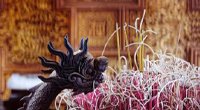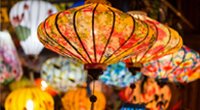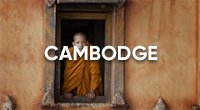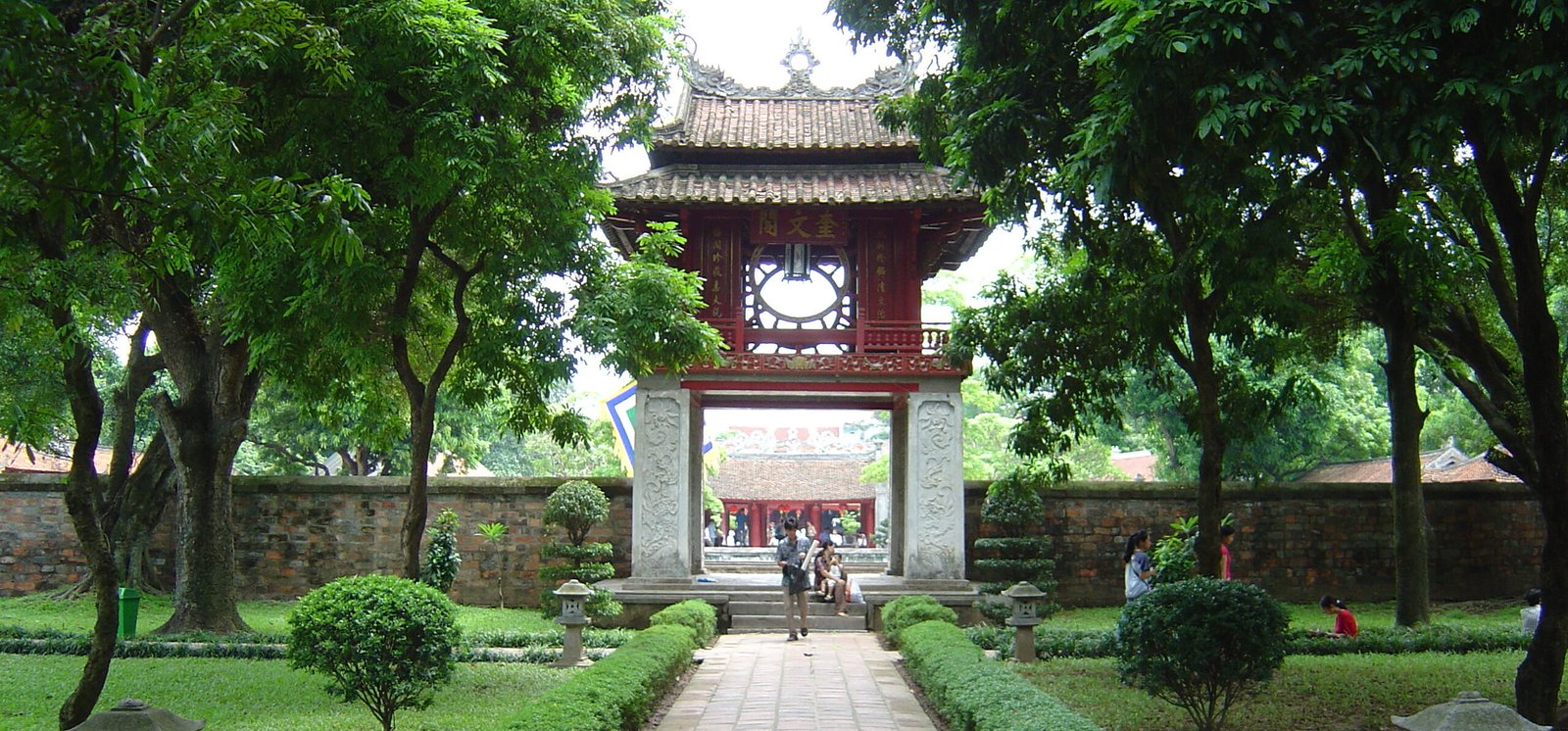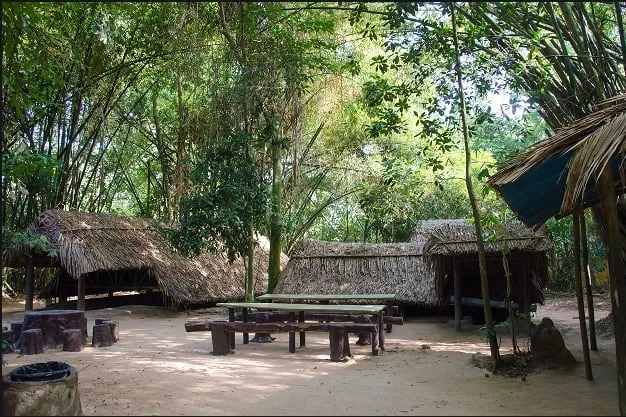Contents
ToggleOrigins of Văn Miếu – Quốc Tử Giám
The Temple of Literature (Văn Miếu) was founded in 1070 by King Lý Thánh Tông, originally dedicated to Confucius, his four most eminent disciples, and 72 other revered scholars of Confucianism. This was not only a place of worship but also a symbolic declaration that Vietnam would embrace knowledge, education, and moral values as pillars of its civilization.
In 1076, his son King Lý Nhân Tông established the Imperial Academy (Quốc Tử Giám) within the temple grounds, making it Vietnam’s first national university. Reserved initially for princes and the sons of noble families, it gradually opened to exceptionally talented commoners, creating a merit-based system that rewarded intellect and virtue.
For nearly seven centuries, the Imperial Academy served as the foremost center of Confucian education in Vietnam. Generations of mandarins, scholars, and leaders were trained here, leaving a profound mark on the nation’s political, cultural, and intellectual life. By the 15th century, under the Lê dynasty, it had grown into one of Southeast Asia’s most prestigious institutions of higher learning, attracting the brightest minds of the era and reinforcing the identity of Đại Việt (ancient Vietnam) as a land of knowledge and scholarship.
Great Figures Honored Here
The Temple of Literature is not merely a university or a place of worship; it is a shrine that celebrates both universal wisdom and Vietnam’s own intellectual heritage. Among the great figures commemorated here are:
- Confucius – Revered as the “Master of Ten Thousand Generations,” he laid the foundation of Confucianism, advocating moral integrity, family loyalty, just governance, and social harmony. His teachings shaped not only Chinese society but also deeply influenced Vietnamese feudal education and statecraft.
- Chu Văn An (1292–1370) – A brilliant scholar of the Trần dynasty, known for his incorruptible character and devotion to education. After refusing high-ranking official posts, he dedicated himself to teaching. Later, he was invited to lead the Imperial Academy, embodying the Vietnamese ideal of the virtuous teacher.
- King Lý Thánh Tông (1023–1072) – The visionary monarch who founded the Temple of Literature in 1070, integrating Confucian ideals into Vietnamese governance while maintaining a Buddhist heart.
- King Lý Nhân Tông (1066–1127) – The son of Lý Thánh Tông, he expanded the temple by founding the Imperial Academy in 1076 and organized Vietnam’s first civil service examination in 1075, shaping the foundation of Vietnam’s bureaucratic system.
- King Lê Thánh Tông (1442–1497) – A celebrated emperor of the 15th century, both a strategist and a patron of learning. He expanded Văn Miếu – Quốc Tử Giám into a grand architectural complex and instituted the erection of stone steles inscribed with the names of doctoral laureates, immortalizing scholarly achievement.
Education at Vietnam’s First University
Life at the Imperial Academy was disciplined and intellectually demanding. Students devoted themselves to mastering the Confucian classics, poetry, history, philosophy, and literary composition. Training could last from three to seven years, depending on one’s progress and performance.
The academic path was structured around a rigorous three-level examination system:
- Regional exams – conducted locally to select promising talents.
- National exams – testing candidates’ knowledge through essays, poetry, and administrative writings.
- The royal exam – held in the royal palace and personally overseen by the king, representing the highest honor and the final step toward becoming a mandarin.
The pinnacle of achievement was having one’s name inscribed on the stone steles at the Temple of Literature. From 1442 to 1779, a total of 1,307 scholars earned this eternal recognition. Each name carved in stone was not only an honor for the individual but also a source of pride for their family, village, and homeland.
Through this demanding system, the Imperial Academy nurtured generations of Vietnamese elites who contributed profoundly to the nation’s governance, culture, and identity.
Architecture and Highlights
Covering nearly five hectares, the Temple of Literature is laid out along a symmetrical north–south axis, typical of classical Confucian architecture. The entire site is divided into five successive courtyards, each with its own symbolic role and architectural treasures. Walking through them is like taking a journey into Vietnam’s intellectual past.
- The Great Middle Gate (Đại Trung Môn) – The formal entrance to the temple. It represents the “Royal Path” reserved for the king and mandarins during ceremonies. Flanked by the Gates of Success and Virtue, it sets a solemn tone as visitors enter.
- Khue Văn Pavilion (Khuê Văn Các) – Built in 1805 during the Nguyễn dynasty, this elegant two-story wooden pavilion with its circular windows symbolizes the beauty of knowledge and literature. Today, it serves as the official emblem of Hanoi, appearing on banknotes, logos, and city souvenirs.
- Well of Heavenly Clarity (Thiên Quang Tỉnh) – A square pond located at the heart of the temple, reflecting the sky and symbolizing purity of thought. On either side of the well are rows of stone turtles carrying the doctoral steles, linking the pursuit of knowledge with longevity and wisdom.
- Great House of Ceremonies (Đại Thành Môn & Bái Đường) – The central sanctuary dedicated to Confucius and his disciples. Inside, ornate altars with red lacquer and gold leaf display offerings of incense, fruits, and candles. It is here that generations of scholars paid their respects to the great teacher before beginning examinations.
- Thái Học Courtyard – Originally used as classrooms and dormitories for students of the Imperial Academy, this area now houses statues of kings Lý Thánh Tông, Lý Nhân Tông, and Lê Thánh Tông, honoring their role in promoting education. Exhibitions showcase ancient books, teaching tools, and the history of Vietnam’s civil service examinations. A venerable 500-year-old banyan tree shades the courtyard, symbolizing longevity and wisdom.
Beyond the courtyards lies the Lake of Literature (Hồ Văn), bordered by pavilions and gardens. Once a place where scholars composed poetry or reflected in solitude, it remains today a peaceful retreat from Hanoi’s bustling streets.
The Doctoral Steles – A UNESCO Heritage Treasure
Among the temple’s most iconic relics are the 82 stone steles, each mounted on the back of a stone turtle—an enduring Vietnamese symbol of knowledge, resilience, and longevity. These steles record the names, birthplaces, and achievements of scholars who passed the royal examinations between 1442 and 1779.
Originally, 117 steles were erected, but only 82 remain today. Together, they honor 1,307 laureates, turning this site into a living archive of Vietnam’s educational history. The inscriptions not only commemorate individual scholars but also reflect the values of Confucian education: virtue, dedication, and service to the nation.
In 2010, on the occasion of Hanoi’s 1,000th anniversary, UNESCO recognized the doctoral steles as part of the Memory of the World Register, highlighting their importance as a unique record of intellectual history in Asia. This recognition elevated the Temple of Literature from a national treasure to a global heritage site.
Activities for Visitors
While deeply historical, the Temple of Literature is also a vibrant cultural space where the spirit of learning and tradition is kept alive. Visitors can enjoy not only sightseeing but also interactive experiences:
- Calligraphy and Woodblock Printing – Skilled artisans often demonstrate the art of Hán-Nôm calligraphy, writing auspicious words on red paper during festivals. Woodblock printing workshops also allow visitors to try ancient Vietnamese printing techniques.
- Heritage Workshops & Seasonal Festivals – Special events such as the Spring Calligraphy Festival attract thousands of visitors, especially students seeking good luck in exams. Other seasonal programs include traditional games, cultural fairs, and ceremonies that recreate imperial-era rituals.
- Traditional Music Performances – Evening tours may feature ca trù (ceremonial singing) or other traditional musical genres, performed against the atmospheric backdrop of the courtyards. The blend of music, architecture, and lantern-lit pathways creates a magical experience.
- Educational Exhibitions – Rotating exhibitions explain Vietnam’s Confucian education system, the civil service examinations, and the biographies of great scholars. These displays make the temple both a museum and a living classroom.
How to Visit
📍 Location: The Temple of Literature sits just 2.5 km west of Hoàn Kiếm Lake, making it an easy stop during a walking or cycling tour of central Hanoi. Despite being in the heart of the capital, its high walls and ancient trees create a surprisingly peaceful refuge.
🚍 Getting There:
- By Bus: Several public bus routes—02, 23, 25, 38, and 41—stop within a short walk of the temple’s main gate, making this a budget-friendly choice.
- By Taxi or Ride-hailing App: Simply follow the route from Lý Thái Tổ → Tràng Thi → Cửa Nam → Nguyễn Khuyến → Văn Miếu Street. The drive is only 10–15 minutes from the Old Quarter.
- By Bicycle or Walking Tour: Many visitors choose to combine the temple with nearby attractions such as Ho Chi Minh Mausoleum, the Fine Arts Museum, or the Flag Tower of Hanoi for a cultural half-day itinerary.
⏰ Best Time to Visit:
- Early morning (8–10 am): Ideal for photos, with fewer crowds and softer light filtering through the banyan trees.
- Late afternoon (3–5 pm): The courtyards are shaded and tranquil, perfect for strolling or joining cultural activities.
- Avoid weekends and exam season: During student festivals, the site can be bustling with local youth seeking blessings for their studies.
Visitor Tips
The Temple of Literature is both a historic site and a place of reverence, so a few small gestures of respect go a long way:
- 👕 Dress modestly: Shoulders and knees should be covered to honor the spiritual and scholarly traditions of the temple.
- 🕯️ Offer incense respectfully: Burn only one stick of incense in designated areas if you wish to make an offering—this symbolizes sincerity and avoids overwhelming the air with smoke.
- 🐢 Respect the steles: Do not touch or climb on the stone turtles’ heads. Locals believe this gesture brings misfortune rather than luck.
- 🤫 Maintain silence and cleanliness: The temple is a space for reflection. Speak softly, dispose of waste properly, and treat the surroundings with care.
- 📸 Photography: Allowed in most areas, but avoid flash photography inside the ceremonial halls. Always be mindful of worshippers and ceremonies.
Final Thoughts
The Temple of Literature is more than a relic of the past—it is a testament to Vietnam’s timeless respect for learning and virtue. A visit here is not just about admiring beautiful architecture but about connecting with the cultural heartbeat of Hanoi.
If you’re exploring Vietnam’s capital, this is an experience you cannot miss—an encounter with history, tradition, and the enduring spirit of education.



